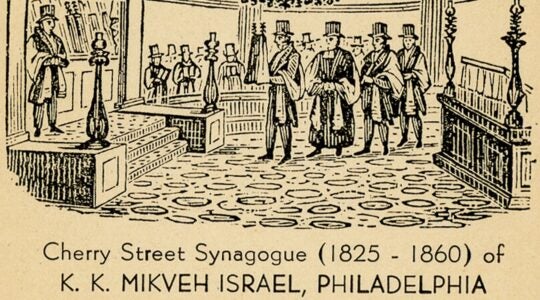On the basis of my experience in raising billions of dollars for NYU for the past 30 years, from donors who were young and old, I strongly disagree with the following statement in the article headlined “Next-Gen Givers Want To Blaze Own Philanthropic Path” (Aug. 16): “The younger donors want their giving to be information-driven, hands-on, impact-focused, proactive, and peer- oriented.”
I find this insulting to the so-called “older men and women” that I have dealt with and who have given billions to charity — men and women like Larry and Bob Tisch, George Heyman, Ken Langone, Larry Silverstein, Tom Murphy, Helen and Martin Kimmel, Leonard Stern, Shelby White, Ace Greenberg, Phyllis Wagner and Michael Steinhardt, to mention just a few.
Do you think they ever gave a major gift without gathering as much information as possible about the institution and the programs they wanted to support? They were as information-driven, as impact-focused, as hands-on, as peer-oriented, and as proactive as any young donor I have dealt with.
They never gave me a check and said, “Goodbye, Naomi.” After they made their gift they wanted to be involved in the project they funded. They wanted to know how their money was spent. They wanted to be involved in any decision about their funded project. And many often pressed to be on the board of trustees. Many hours were spent in discussing how their gifts would make a difference.
And this is not unique to NYU. Ask anyone involved in major gifts at any institution.
I also take offense when I read that some young philanthropists believe that they are also less concerned about recognition. I sincerely doubt that. Ego gratification is not the possession only of the old. At every age people like to be recognized in one way or another for their achievements. I have never found that a gift is made solely for the purpose of recognition. Donors, regardless of age, are moved by their belief in an institution, program, or research that they believe will “make the world a better place.” Never underestimate “altruism” as a genuine overriding motivation. And, if at the same time they want to be recognized for this contribution, so be it.
I also cringe when I hear people say that the younger generation wants to make the philanthropy world more businesslike — so the nonprofit organizations can be as efficient as corporations in the American private business sector. Are they talking about the auto industry, the airlines, the banks, the steel industry, and farms that needed and still need subsidies from the government to survive? Are they suggesting that the nonprofit sector look to the private sector for examples of efficiency and ethical behavior? I doubt it.
One other aspect about the new philanthropists merits comment. In much of what they say and in many articles written about them, there is the assertion that the source of new ideas and creativity resides only outside major communal institutions. This is not true. No one has a monopoly on creativity. New ideas and new approaches sprout among people working in established organizations as well as those creating new ones. What the community needs today is for these “new” philanthropists not to deride the established communal organizations (like the federations), but to work, where it is appropriate, in partnership with them to determine the best solutions. In this way, each can learn from the other. Where such partnerships have existed, the whole community benefits.
One last comment: the report covered by your article closely mirrors the findings of a recent study by the Johnson Center at Grand Valley State University about the “X and Millennial Generations” in the American community at large. Obviously Jewish young givers showed more interest in Jewish causes and institutions, but by and large the findings of both studies were similar. In the Johnson study they found that young people were mostly interested in environment and animals; advocacy, especially political advocacy; civil rights and human rights, including women’s rights. They were also showing more interest in pre-K to college education and international affairs. They were giving less to arts and culture, religious and faith based institutions, health and hospitals, and umbrella groups. The giving among the Jewish young people fell into similar patterns.
So I am concerned about the future of philanthropy in the Jewish community. Certainly the Orthodox and those young men and women who went to religious day schools or religious camps will continue to give strongly to Jewish institutions, but they represent a minority of the young Jewish people in this country. Ask any director of Hillel and he will tell you how hard it is to get Jewish young people to be part of the Hillel programs. The young people, moreover, do not like “umbrella groups.” They like to do their own thing with their own foundations, etc. This will have serious implications for the Federation campaigns.
It is clear that one can read a report in many ways. I read the report on young Jewish givers from my fundraising experience at NYU and my lay position as co-chair of the Bronfman Center for Jewish Student Life at NYU. I was much less of an optimist than the other commentators in your article. It may be that they are not fundraisers; they just write about or do research about fundraising. There is a big difference between the two.
Naomi Levine is chair and executive director of the NYU Heyman Center for Philanthropy and Fundraising.
The New York Jewish Week brings you the stories behind the headlines, keeping you connected to Jewish life in New York. Help sustain the reporting you trust by donating today.




